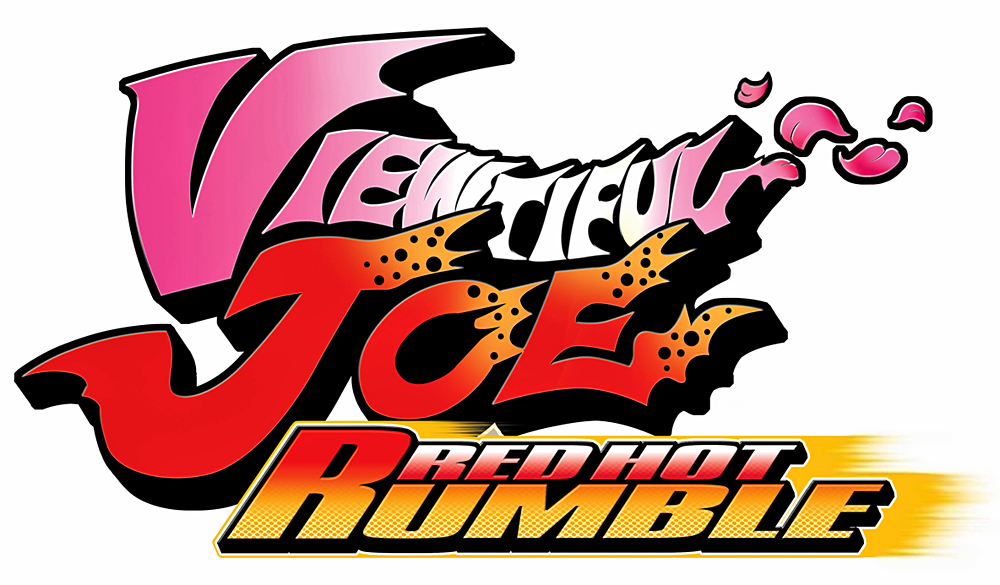Another year has rolled by for us, and now we celebrate with
our look at the Viewtiful Joe series. As I said when I first chose Viewtiful
Joe to replace Earthworm Jim, this series actually has a lot of similarities
with it, which gets us to the 3rd game. In both cases it’s a
black-sheep, departure from the main series based more on their respective TV
shows (yeah, there was a Viewtiful Joe TV show. If you didn’t know about it I’m
not surprised). But while Earthworm Jim 3D was just an attempt at going 3
dimensional, Viewtiful Joe’s equivalent is a party game. Let’s get right into
Viewtiful Joe: Red Hot Rumble for the Nintendo GameCube.
It’s really hard to know where to place Viewtiful Joe: Red
Hot Rumble in terms of the other games. It would be easiest to say that it happens
after all of them, but that doesn’t quite add up. See, unlike Earthworm Jim 3D,
which was just inspired by the TV show, Viewtiful Joe: Red Hot Rumble is based
directly on it. This means you get characters like Captain Blue Jr. and Sprocket
that I have no idea who they are.
Regardless, the plot of the game is that Captain Blue is
announcing his retirement and is need of a successor in his films. As the
director can’t decide who should take his place, it is left to a contest
between the regular Viewtiful Joe staff (and yes, this include Captain Blue
competing. I guess he thinks that if he wins, no one deserves to take his
place?). More than any other Viewtiful Joe game, this plot confuses me. While
with the others, we’re inside a movie world, this game makes it quite clear
that they are filming a movie. So while I get it could be that the director is
filming multiple people at the same time to see who gets the best audience
reaction, the fact that he’s chosen some people would mean he’s already
narrowed his choice. Also, while I understand that there is SOME improv that
could be involved, there still needs to be a script, and that would heavily
influence all the events. And the tasks that you’re asked to do would make for
a really weird movie. I get this is just a party game and that I’m probably
missing things by not knowing anything about the cartoon, but it still doesn’t
seem right.
Each section does try to have its little episodic lessons
and eventually there’s another plot that rises and takes over, making for a
“let’s not fight and just be friends” BS no one really wins ending. All of it
is lame.
Saying that this game is a party game might give you the
wrong impression, as it is desperately trying to be Super Smash Bros at the
same time. This is a 2D game where you can fight (albeit with health bars) and
has simple controls for your attacks. The main difference being that the point
of each round isn’t always to fight and dying is often only a penalty at most.
As I’ve said, the game is divided in section called
“movies”. Each movie has a certain number of “acts” within them, with a goal to
win and an instant lose condition. Those acts are composed of many mini games.
The game is so compartmentalised, I think it was trying to be a Russian nesting
doll…
Instead of fighting, you get these quick missions like
“collect gems!” “grab the flag!” or “pick the right side!” All very simple
stuff, but it gives the game a rushed kind of feel. Now, I don’t mean that
because it’s a mini-game collection, I enjoy WarioWare and I think the pacing
in that game is perfect. But the problem is that the games in Viewtiful Joe Red
hot Rumble don’t work with how the game is laid out with the fighting controls.
It gives you just enough time to get used to them and then yanks the rug from
under your feet with a brand new game with a brand new goal.
Viewtiful Joe: Red Hot Rumble actually comes out
to be one of the weakest times I’ve ever had to introduce *Capcom time*. The
story is confusing and pointless and the game play can be annoying at times. I
do admit, both of them aren’t terrible, and there is some fun to be had with
the game once you get used to the sensory overload of all the rushing. But I’m
pretty sure I’ve said it before, a game that you have to force yourself to get
used to kind of works against itself in that regard. The best thing about this
game is that it was most commonly available in a cheap bundle with Viewtiful
Joe 2. I give Viewtiful Joe: Red Hot Rumble 5.5 levels out of 10.
